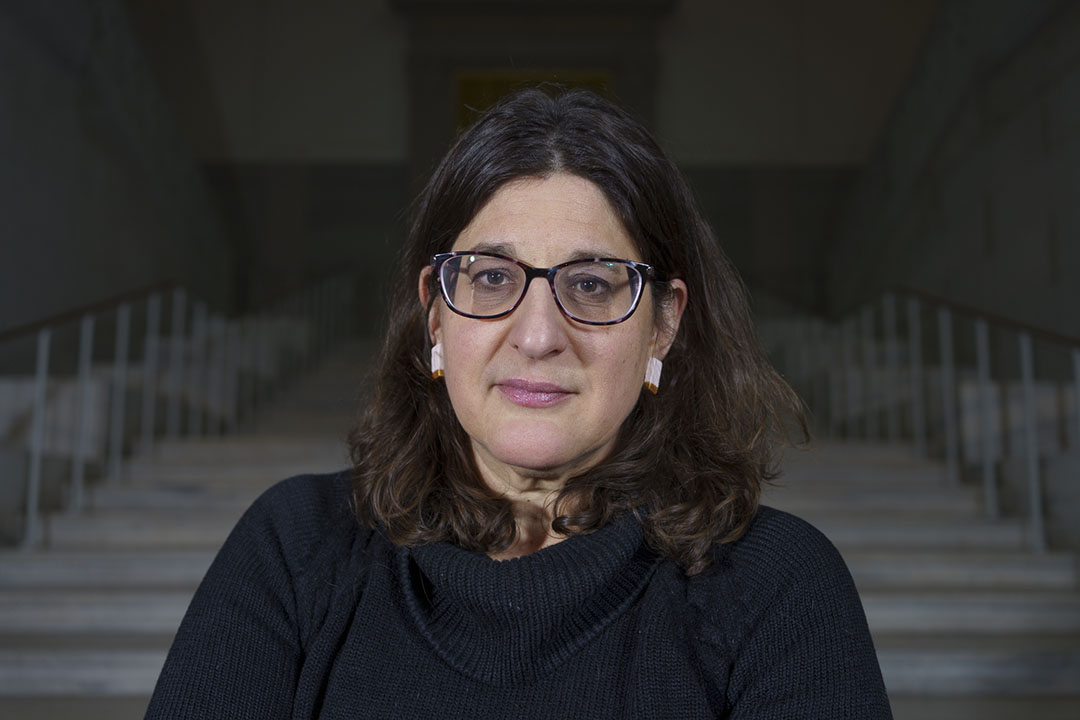The American Museum of Natural History made headlines recently by announcing plans to close two halls exhibiting Native American objects. Items like a canoe from the Menominee tribe of Wisconsin and a Hopi Katsina doll from Arizona will be off-limits to the museum’s 4.5 million annual visitors.
Across the country, other museums have followed suit—with some, like the Field Museum in Chicago and the Cleveland Museum of Art, covering display cases while others are shuttering exhibits with sacred objects and burial belongings. It’s all in response to federal policy requiring museums to obtain consent from tribes before exhibiting cultural items.
But the moves are more than just regulatory compliance, according to George Washington University’s Laura Schiavo, associate professor of museum studies and deputy director of the Corcoran School of the Arts & Design at the Columbian College of Arts and Sciences.
She calls it a “reckoning”—a response to a history of grave robbing, archaeological excavation and centuries of theft from Native people.
And while it may be long overdue, Schiavo said it isn’t surprising. In fact, Schiavo, who has worked for D.C.-area museums including the City Museum and the National Building Museum, pointed to an open secret in the museum world: These trusted cultural institutions have always been deeply embedded in the politics of their time.
“No museum is neutral,” said Schiavo, author of the book U.S. Museum Histories and the Politics of Interpretation (Routledge, 2024). “As professionals, if we don’t understand [the exhibit closings] to be part of a long line of engaging with the cultural politics of museums, then we don’t understand this moment at all. If we want people to keep coming to museums, we need to deal with the past.”
Emerging from the COVID-19 pandemic, the museum world is undergoing a moment of transformation—grappling with issues like an evolving relationship to technology and a deeper focus on ethics and values in collecting.
Schiavo’s book, an edited collection drawing on the scholarship of historians, art historians and anthropologists from across the country, traces U.S. museums’ past to inform their future. From the nation-building narratives of the early 19th century to modern representations of inclusion and pressing issues like climate change, Schiavo said U.S. museums are both influenced by and help inform the events swirling around them. At times, she argued, they have either reinforced popular notions of race, gender and progress—or challenged them.
“These are institutions of power that tell stories about identity,” she said. “Which objects [museums] choose to exhibit—and how they put these exhibits together—usually comes out of an ideology.”
Meanwhile, they’ve largely maintained a reputation among the public and policymakers as unbiased sources of information. By contrast, Schiavo said, museums have historically collected and displayed objects to fit narratives rooted in ideologies of race, class and gender.
In the 1920s, as one of the book’s chapters argues, the Witte Museum in San Antonio exhibited weapons and items like land deeds and maps that celebrated Texas settlers and silenced Tejano voices, showcasing a Texas narrative history that validated Anglo supremacy and violence.
Even after the so-called “Golden Age” of museums in the late 19th and early 20th century ushered in increased professionalization standards, many museums largely attempted to sideline the Depression and the Civil Rights Movement, Schiavo said, while actively engaging in the politics of the Cold War and the Space Race.
A Fraught Connection
The fraught connection between U.S. museums and Native Americans dates back centuries, Schiavo said, noting that “the white people creating this country had a fascination with the uniqueness of Native Americans” to contrast their new nation from Europe.
In the early 19th century, for example, famed explorer William Clark, then the federal superintendent of Indian affairs, used his Indian Museum in St. Louis to advance his diplomatic interests. He promoted U.S. power by displaying aspects of indigenous culture to white American audiences in an argument for removal and assimilation—items from Native American life like buffalo robes, wampum and blankets.
Today, exhibiting Native American human remains is prohibited. In 1990, the Native American Graves Protection and Repatriation Act established protocols for returning human remains and other items to tribes. Yet museums still hold tens of thousands of human remains in storage. The recent federal regulations were designed to hasten returns and ensure consultation with tribes—leading to a reexamination of museum displays and the American Museum of Natural History’s decision to close exhibition space.
Even as the museum landscape changes, Schiavo sees an opportunity to right historical wrongs while shifting the very mission of museums themselves—away from the “beloved truth-teller” role, she said, and toward forums for dialogue and provocative conversations.
“There is power in these social spaces where information and ideas are exchanged,” she said. “That’s much more dynamic than an institution that just claims to tell big truths.”



